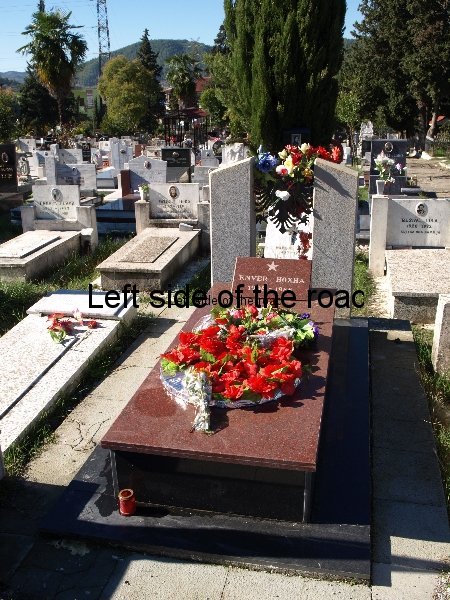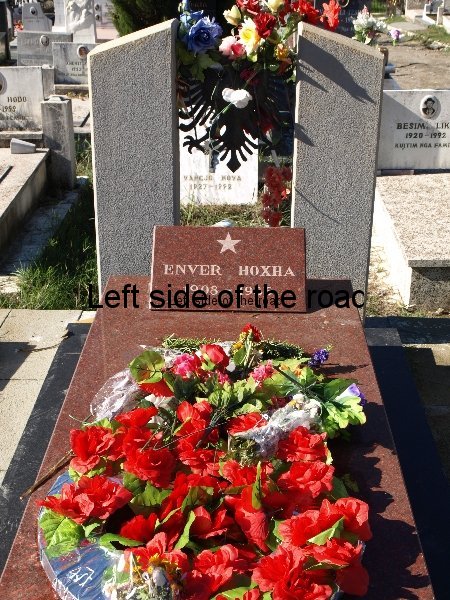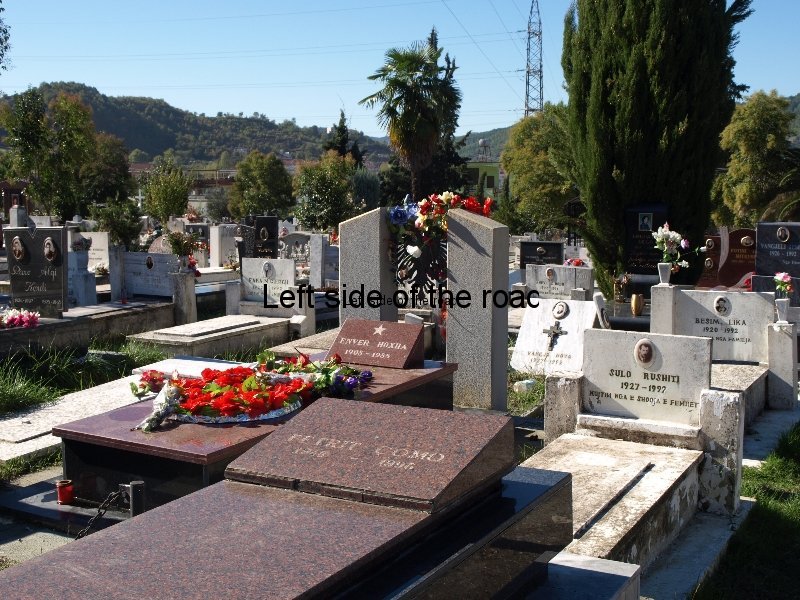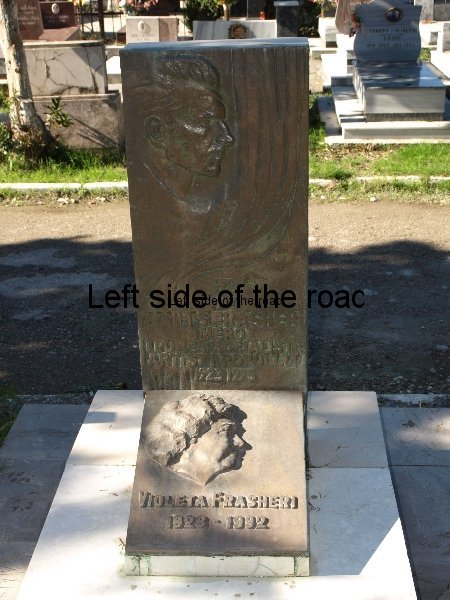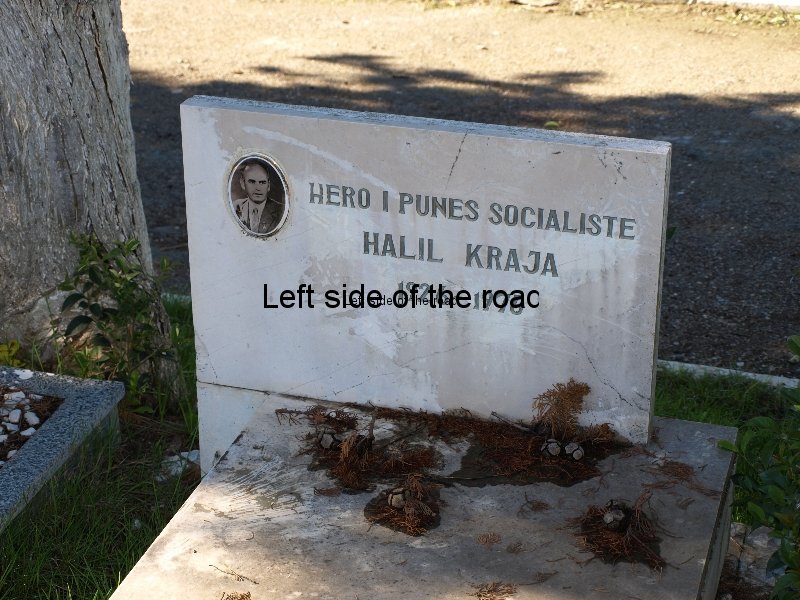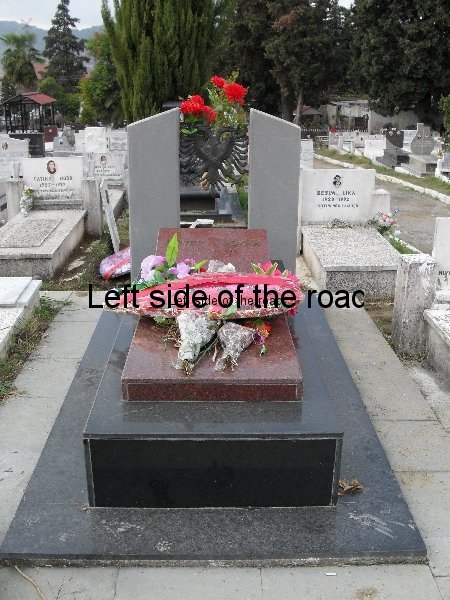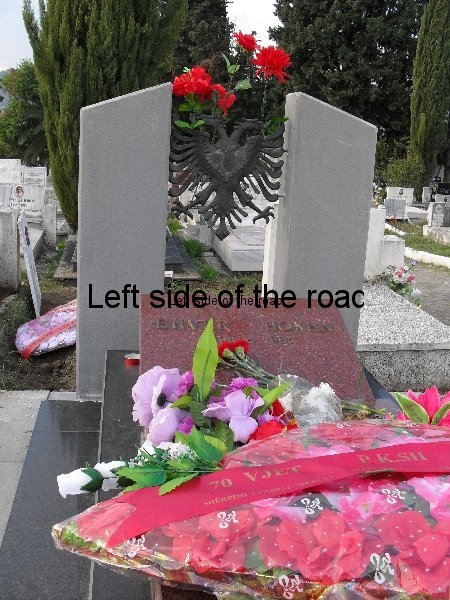
Albania 3 Lek – 1964
In the early part of 2018 the British Museum hosted a small exhibition under the title ‘The Currency of Communism’. It was hardly a huge exhibition, barely more than a half a dozen (small) display cabinets in a room where you can swing a cat – but only just.
In such a tiny space you’re not going to get a lot but what is there is quite interesting in the sense that many of the notes are from countries where the construction of Socialist is no longer in vigour. But it does give the visitor a chance to see some of the images that have been used on coins and notes in the last hundred years – since the Great October Revolution in Russia in November 2017.
Although I haven’t mentioned coinage or notes in my discussions about Socialist Realist Art they are another area where the different socialist societies sought to present the values of collectivity and to promote labour as something to celebrate and honour.
As it mentions in this exhibition the images on the notes were part of the propaganda battle that all socialist societies have to wage against the insidiousness of the capitalist past in a particular country and the capitalist present in a hostile world.
But when the word ‘propaganda’ is used in most circumstances in Britain it’s always in a negative context. THEY, i.e., the enemy, use propaganda WE, the good guys in all this (although the country is constantly invading other countries and killing people in their millions) don’t stoop to such perfidy.
For some reason in Britain it is not accepted that having the head of a Saxe-Coburg and Gotha on all British coins and notes has nothing to do with the promotion of a monarchy. That having the face of a bloated, drunken, racist and class warrior for his class – the aristocracy – doesn’t also promote the values that he believed in to his core and carried out with total disregard to the harm he might cause to ordinary people both in this country and abroad. The values of the monarchy and Churchill are those of the perpetuation and promotion of a society of oppression and exploitation.
But then, as they don’t get challenged by enough people they can get away with their lies. That’s OK, they fight for their class the problem is that too few of us fight for our class. And, what’s worse in some respects, don’t even know their own history to be able to challenge the idea that the aristocracy are parasites on the body politic and their destruction is necessary for our freedom.
Back to the currency.
There were a few things of interest in the handful (literally) of notes and coins on display.
One was the innovative manner in the manner in which all kinds of materials were used as a stop-gap when the old currency became useless after a revolution. You can’t allow the old currency to remain in circulation as the old rich will be able to remain rich. One example following the February Revolution in Russia was of a small sheet of postage stamps over printed with the declaration of the abdication of the Tsar. Other examples were simple printed pieces of paper that gained their value from the trust that people placed in them or the over stamping of coins with a hammer and sickle – which soon became the symbol of Soviet Communism and an integral part of the coat of arms of the Union of Socialist Soviet Republics.
When financial stability had been achieved the new states started to produce notes as are recognised throughout the world. Now they used the skill of proletarian artists and engravers to reproduce the story of the building of Socialism as was seen in art galleries throughout the socialist world as well as in that most extensive of all Socialist Realist Art galleries – the Metro systems, primarily Moscow but also Leningrad and other major cities, in the Soviet Union.
But what grated with this exhibition was the ignorance of the curator/s and their total lack of understanding of what Communism is all about. Obviously they haven’t read any Mao Tse-tung as they write (giving the impression of authority – after all it’s the British Museum) about something they know absolutely nothing.
Not only do they not know anything about the ideology of Marxism-Leninism (the overriding theory that has been behind all the socialist revolutions of the last hundred years and will be the ideology of those revolutions to happen in the future) they know nothing of history.
The curators state: ‘Communism proposes that money has no role in a utopian society. To date though, no communist state has successfully removed money from its economy.’ Here they create a false premise just so that they can then attack it and add to the propaganda battle of capitalism against those who aim to construct a better society free from oppression and exploitation.
The existence of a Communist Party as the ruling party in any particular country doesn’t mean that the country has achieved the ultimate aim of the establishment of Communism.
No Marxist-Leninist of the 20th century ever argued that Communism had been established in any country. Socialism had been established, the first and necessary stage of Communism, but that would exist for an indeterminate time until the conditions for the establishment of Communism arose. And they were unlikely to arise when so much of the world was still under the yoke of capitalism and imperialism.
In the limited ‘explanation’ given in the text in this small room there was constant reference to the fact that many things that are paid for by money in capitalist societies (such as health, education, housing, leisure, transport and social services) are included as part of a worker’s social wage. However, this does not mean that ALL that people need in their daily existence in a Socialist society is there for people to take without some sort of cash transaction taking place.
It is true that the vestiges of the old order, that are demonstrated by the existence of money, means there are opportunities for the unscrupulous and corrupt to take advantage of that ‘weakness’ in Socialism and attempt to use that weakness for their personal benefit. Realising that the taking of State power was only the first act along the road to Communism and that all could be sabotaged by such rotten elements Stalin declared: ‘The Party becomes strong by purging itself of opportunist elements.’ For it was in the ruling party that such opportunists saw their best chance of success.
No Socialist society has existed for more than 46 years (in Albania) so even the best of Communists is more than likely to be tainted by the venom that has been bred into people’s attitudes over the millennia of various systems of exploitation and class differentiation. The construction of Socialism, aiming for Communism, is both a struggle to create the material level to satisfy the needs of the whole of the population but it is also a struggle of ideas to temper their desires to a level that the is sustainable for the whole of society.

Save for the Future
‘Consumerism’ that developed, principally after 1945, in the capitalist countries was a serious problem for the war damaged Socialist countries. An increasing number of ordinary working people were seen as being able to surround themselves by ‘luxuries’, a term used in the past for items that are now considered the norm. But this consumerism is, and has always been, fed by debt. It started out with Hire Purchase and is reaching its nadir at the moment with credit card debt where people are buying things they don’t need with money they don’t have and, in many cases, won’t ever have.
Perhaps the people in socialist societies were asked for too much of a sacrifice, working for the future without getting something over and above the necessities today. This idea is represented in the exhibition by the reproductions of posters which encouraged workers and collective peasants to save rather spend all they earned on goods for the present. This is one of the many aspects of the first period of Socialist construction that will need to be considered during the start of the second.
The opposite is the case in capitalist countries where all the State and capitalist propaganda is geared to encourage workers to live only for the now, only for consumerism. How else is it possible to explain the inane concept of ‘retail therapy’? All the debt is being pushed into the future, for later generations to deal with – which will almost certainly lead to a military conflict – as has been the solution so many times in the past.
Because money under capitalism leads to regular economic crisis. It creates the conditions for the innumerable ‘bubbles’ that have plagued capitalism from the start and which are growing in various aspects of present day society. Even staunch supporters of the capitalist system talk of ‘when’, not ‘if’, the crisis will occur when referring to the future.
Capitalism concerns itself only for gratification now and to maintain its control of society does all that it can to instil such a narrow-minded, short-term attitude in their populations. This can be seen in the manner that the system has cut a swathe through cultures, nature and the lives of countless millions of working people. They are prepared to destroy the world if it means they can accumulate more and more wealth, more ‘money’.
This is why all past Socialist societies have argued for the gradual diminution of the importance of money and its eventual abolition – but only when the conditions are right.
In the village of Nanjiecun, in central China, a small community of a few thousand have been able to reduce the amount of cash transactions but not all. But it’s a small, isolated community, an oasis in a vast ocean of capitalism, in China itself as well as the rest of the world. In such a situation it will never be anything more than an aberration, however admirable the effort might be.
Under conditions of Socialism the slogan is: from each according to his ability; to each according to his work. Money will cease to exist when the slogan, under conditions of Communism, is: from each according to his ability; to each according to his needs. (‘Critique of the Gotha Programme’, Karl Marx, 1875.)
When that time arrives ‘intellectuals’ will work for the betterment of society in general and won’t be the self-important, self-congratulatory, self-aggrandising bunch of self-serving sycophants they are now. Is it a surprise they had a hard time in the past in those countries where the construction of Socialism was taking place?
This is probably the smallest exhibition the British Museum has ever presented but brings up some of the biggest questions.






